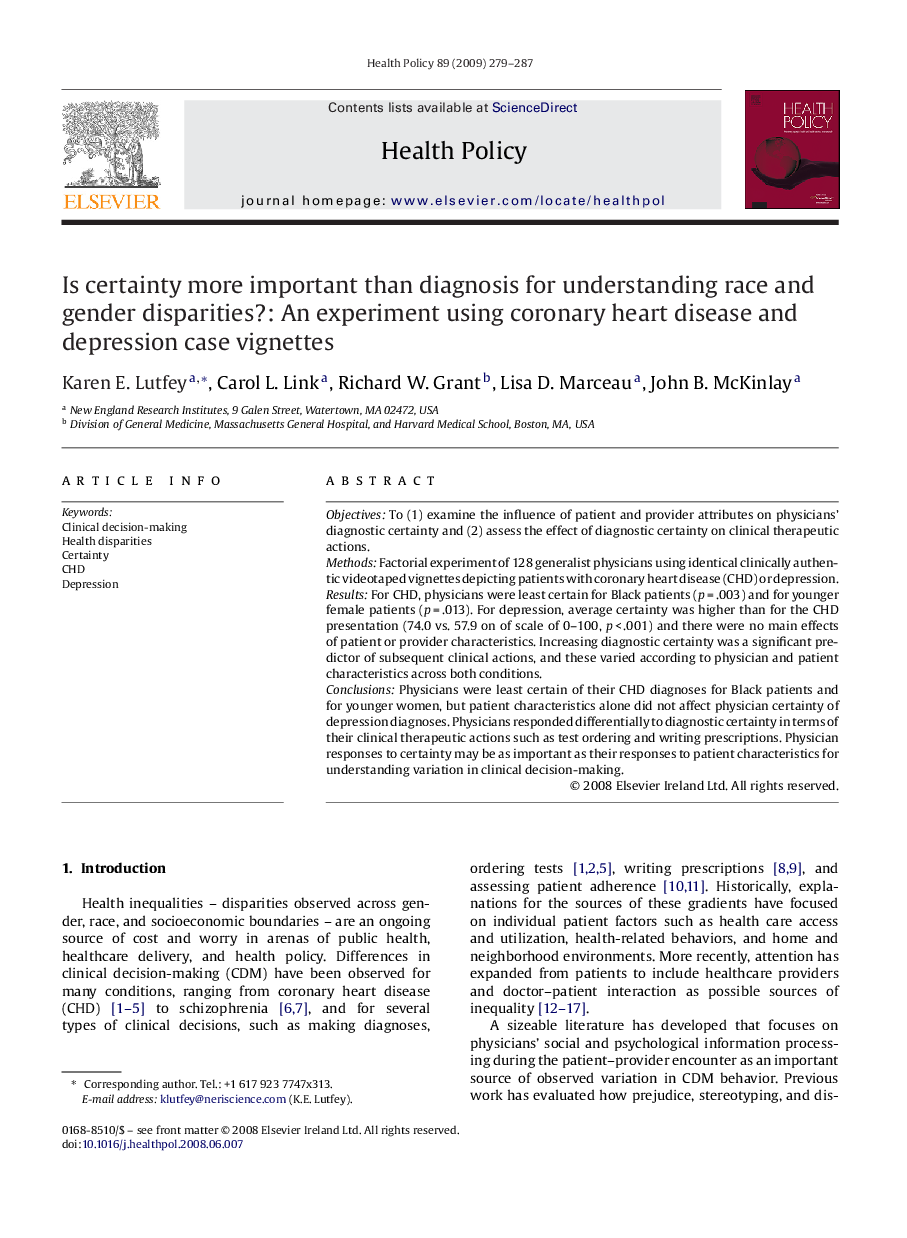| Article ID | Journal | Published Year | Pages | File Type |
|---|---|---|---|---|
| 4198712 | Health Policy | 2009 | 9 Pages |
ObjectivesTo (1) examine the influence of patient and provider attributes on physicians’ diagnostic certainty and (2) assess the effect of diagnostic certainty on clinical therapeutic actions.MethodsFactorial experiment of 128 generalist physicians using identical clinically authentic videotaped vignettes depicting patients with coronary heart disease (CHD) or depression.ResultsFor CHD, physicians were least certain for Black patients (p = .003) and for younger female patients (p = .013). For depression, average certainty was higher than for the CHD presentation (74.0 vs. 57.9 on of scale of 0–100, p < .001) and there were no main effects of patient or provider characteristics. Increasing diagnostic certainty was a significant predictor of subsequent clinical actions, and these varied according to physician and patient characteristics across both conditions.ConclusionsPhysicians were least certain of their CHD diagnoses for Black patients and for younger women, but patient characteristics alone did not affect physician certainty of depression diagnoses. Physicians responded differentially to diagnostic certainty in terms of their clinical therapeutic actions such as test ordering and writing prescriptions. Physician responses to certainty may be as important as their responses to patient characteristics for understanding variation in clinical decision-making.
